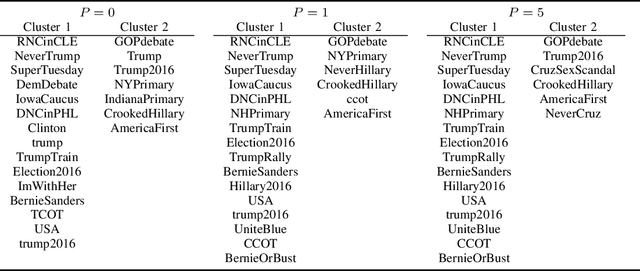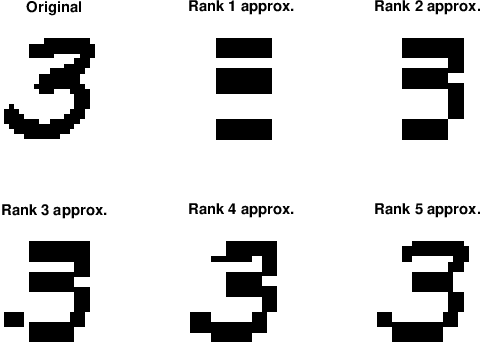Hayato Ushijima-Mwesigwa
Neural Architecture Search Algorithms for Quantum Autoencoders
Sep 18, 2025Abstract:The design of quantum circuits is currently driven by the specific objectives of the quantum algorithm in question. This approach thus relies on a significant manual effort by the quantum algorithm designer to design an appropriate circuit for the task. However this approach cannot scale to more complex quantum algorithms in the future without exponentially increasing the circuit design effort and introducing unwanted inductive biases. Motivated by this observation, we propose to automate the process of cicuit design by drawing inspiration from Neural Architecture Search (NAS). In this work, we propose two Quantum-NAS algorithms that aim to find efficient circuits given a particular quantum task. We choose quantum data compression as our driver quantum task and demonstrate the performance of our algorithms by finding efficient autoencoder designs that outperform baselines on three different tasks - quantum data denoising, classical data compression and pure quantum data compression. Our results indicate that quantum NAS algorithms can significantly alleviate the manual effort while delivering performant quantum circuits for any given task.
PrecipDiff: Leveraging image diffusion models to enhance satellite-based precipitation observations
Jan 13, 2025



Abstract:A recent report from the World Meteorological Organization (WMO) highlights that water-related disasters have caused the highest human losses among natural disasters over the past 50 years, with over 91\% of deaths occurring in low-income countries. This disparity is largely due to the lack of adequate ground monitoring stations, such as weather surveillance radars (WSR), which are expensive to install. For example, while the US and Europe combined possess over 600 WSRs, Africa, despite having almost one and half times their landmass, has fewer than 40. To address this issue, satellite-based observations offer a global, near-real-time monitoring solution. However, they face several challenges like accuracy, bias, and low spatial resolution. This study leverages the power of diffusion models and residual learning to address these limitations in a unified framework. We introduce the first diffusion model for correcting the inconsistency between different precipitation products. Our method demonstrates the effectiveness in downscaling satellite precipitation estimates from 10 km to 1 km resolution. Extensive experiments conducted in the Seattle region demonstrate significant improvements in accuracy, bias reduction, and spatial detail. Importantly, our approach achieves these results using only precipitation data, showcasing the potential of a purely computer vision-based approach for enhancing satellite precipitation products and paving the way for further advancements in this domain.
QAdaPrune: Adaptive Parameter Pruning For Training Variational Quantum Circuits
Aug 23, 2024Abstract:In the present noisy intermediate scale quantum computing era, there is a critical need to devise methods for the efficient implementation of gate-based variational quantum circuits. This ensures that a range of proposed applications can be deployed on real quantum hardware. The efficiency of quantum circuit is desired both in the number of trainable gates and the depth of the overall circuit. The major concern of barren plateaus has made this need for efficiency even more acute. The problem of efficient quantum circuit realization has been extensively studied in the literature to reduce gate complexity and circuit depth. Another important approach is to design a method to reduce the \emph{parameter complexity} in a variational quantum circuit. Existing methods include hyperparameter-based parameter pruning which introduces an additional challenge of finding the best hyperparameters for different applications. In this paper, we present \emph{QAdaPrune} - an adaptive parameter pruning algorithm that automatically determines the threshold and then intelligently prunes the redundant and non-performing parameters. We show that the resulting sparse parameter sets yield quantum circuits that perform comparably to the unpruned quantum circuits and in some cases may enhance trainability of the circuits even if the original quantum circuit gets stuck in a barren plateau.\\ \noindent{\bf Reproducibility}: The source code and data are available at \url{https://github.com/aicaffeinelife/QAdaPrune.git}
Learning To Optimize Quantum Neural Network Without Gradients
Apr 15, 2023Abstract:Quantum Machine Learning is an emerging sub-field in machine learning where one of the goals is to perform pattern recognition tasks by encoding data into quantum states. This extension from classical to quantum domain has been made possible due to the development of hybrid quantum-classical algorithms that allow a parameterized quantum circuit to be optimized using gradient based algorithms that run on a classical computer. The similarities in training of these hybrid algorithms and classical neural networks has further led to the development of Quantum Neural Networks (QNNs). However, in the current training regime for QNNs, the gradients w.r.t objective function have to be computed on the quantum device. This computation is highly non-scalable and is affected by hardware and sampling noise present in the current generation of quantum hardware. In this paper, we propose a training algorithm that does not rely on gradient information. Specifically, we introduce a novel meta-optimization algorithm that trains a \emph{meta-optimizer} network to output parameters for the quantum circuit such that the objective function is minimized. We empirically and theoretically show that we achieve a better quality minima in fewer circuit evaluations than existing gradient based algorithms on different datasets.
Towards Practical Explainability with Cluster Descriptors
Oct 20, 2022



Abstract:With the rapid development of machine learning, improving its explainability has become a crucial research goal. We study the problem of making the clusters more explainable by investigating the cluster descriptors. Given a set of objects $S$, a clustering of these objects $\pi$, and a set of tags $T$ that have not participated in the clustering algorithm. Each object in $S$ is associated with a subset of $T$. The goal is to find a representative set of tags for each cluster, referred to as the cluster descriptors, with the constraint that these descriptors we find are pairwise disjoint, and the total size of all the descriptors is minimized. In general, this problem is NP-hard. We propose a novel explainability model that reinforces the previous models in such a way that tags that do not contribute to explainability and do not sufficiently distinguish between clusters are not added to the optimal descriptors. The proposed model is formulated as a quadratic unconstrained binary optimization problem which makes it suitable for solving on modern optimization hardware accelerators. We experimentally demonstrate how a proposed explainability model can be solved on specialized hardware for accelerating combinatorial optimization, the Fujitsu Digital Annealer, and use real-life Twitter and PubMed datasets for use cases.
Ising-Based Louvain Method: Clustering Large Graphs with Specialized Hardware
Dec 06, 2020



Abstract:Recent advances in specialized hardware for solving optimization problems such quantum computers, quantum annealers, and CMOS annealers give rise to new ways for solving real-word complex problems. However, given current and near-term hardware limitations, the number of variables required to express a large real-world problem easily exceeds the hardware capabilities, thus hybrid methods are usually developed in order to utilize the hardware. In this work, we advocate for the development of hybrid methods that are built on top of the frameworks of existing state-of-art heuristics, thereby improving these methods. We demonstrate this by building on the so called Louvain method, which is one of the most popular algorithms for the Community detection problem and develop and Ising-based Louvain method. The proposed method outperforms two state-of-the-art community detection algorithms in clustering several small to large-scale graphs. The results show promise in adapting the same optimization approach to other unsupervised learning heuristics to improve their performance.
Binary Matrix Factorization on Special Purpose Hardware
Oct 17, 2020



Abstract:Many fundamental problems in data mining can be reduced to one or more NP-hard combinatorial optimization problems. Recent advances in novel technologies such as quantum and quantum inspired hardware promise a substantial speedup for solving these problems compared to when using general purpose computers but often require the problem to be modeled in a special form, such as an Ising or QUBO model, in order to take advantage of these devices. In this work, we focus on the important binary matrix factorization (BMF) problem which has many applications in data mining. We propose two QUBO formulations for BMF. We show how clustering constraints can easily be incorporated into these formulations. The special purpose hardware we consider is limited in the number of variables it can handle which presents a challenge when factorizing large matrices. We propose a sampling based approach to overcome this challenge, allowing us to factorize large rectangular matrices. We run experiments on the Fujitsu Digital Annealer, a quantum inspired CMOS annealer, on both synthetic and real data, including gene expression data. These experiments show that our approach is able to produce more accurate BMFs than competing methods.
Ising-based Consensus Clustering on Specialized Hardware
Mar 04, 2020



Abstract:The emergence of specialized optimization hardware such as CMOS annealers and adiabatic quantum computers carries the promise of solving hard combinatorial optimization problems more efficiently in hardware. Recent work has focused on formulating different combinatorial optimization problems as Ising models, the core mathematical abstraction used by a large number of these hardware platforms, and evaluating the performance of these models when solved on specialized hardware. An interesting area of application is data mining, where combinatorial optimization problems underlie many core tasks. In this work, we focus on consensus clustering (clustering aggregation), an important combinatorial problem that has received much attention over the last two decades. We present two Ising models for consensus clustering and evaluate them using the Fujitsu Digital Annealer, a quantum-inspired CMOS annealer. Our empirical evaluation shows that our approach outperforms existing techniques and is a promising direction for future research.
 Add to Chrome
Add to Chrome Add to Firefox
Add to Firefox Add to Edge
Add to Edge